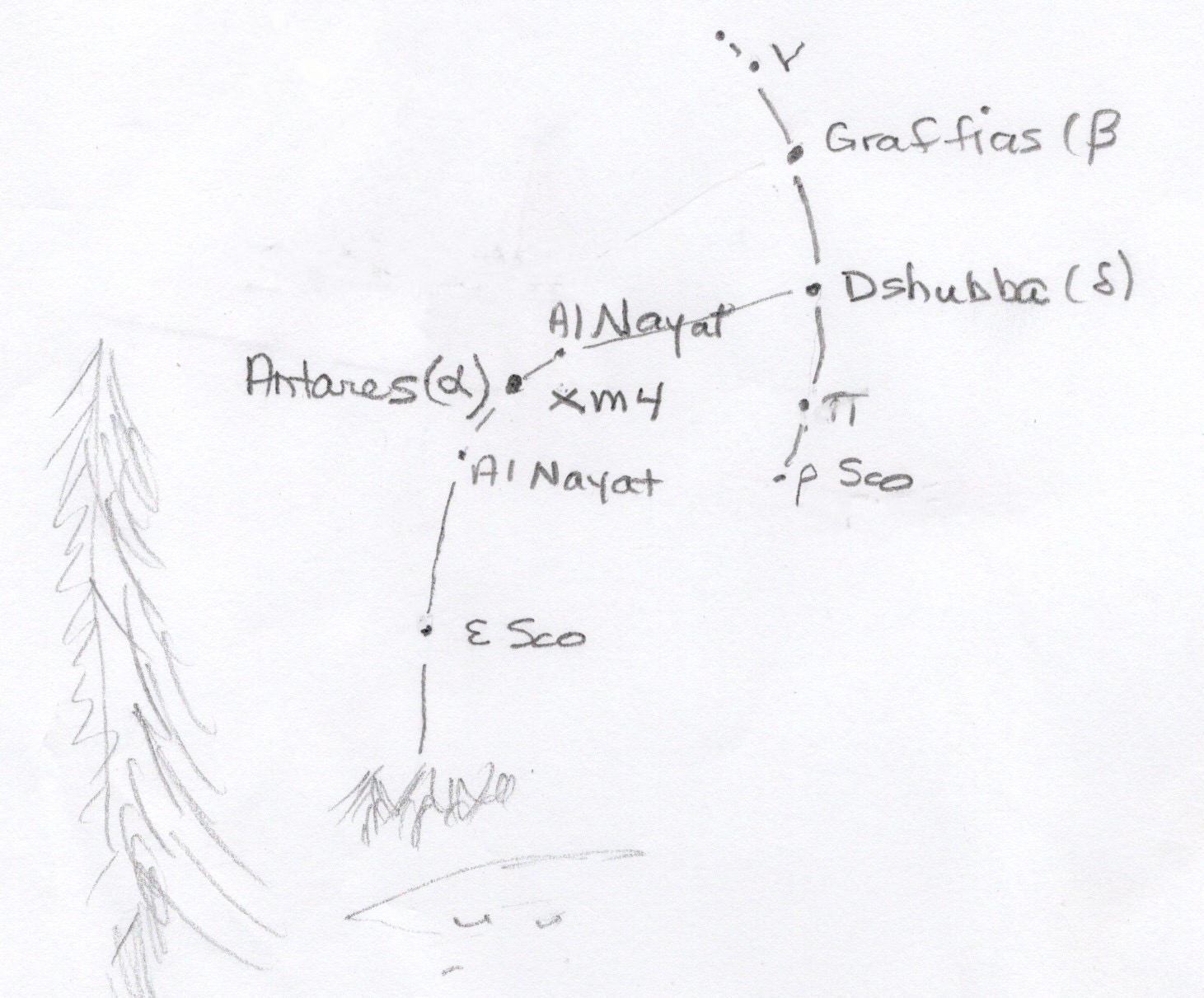Constellations: Coma Berenices, Corona Borealis, Corvus, Scorpius
Asterism: Keystone of Hercules
Messier: M3, M4, M13
Stars: Alpheca, Antares, Arcturus, b Coma Berenices, Dschubba, Graffias, e Sco, n Sco, p Sco, r Sco, γ Sco, δ Sco, σ Sco (Al Nayat), Shaula
HD Stars: 119496, 119686, 119748, 120049, 120364, 120618, 147703, 147743, 147955
HR Stars: 5145
SAO Stars: 82955
Attempted to find without Success:
M68, M10 & M12 (Ophiuchus was still in the trees)
Identified, not Observed:
Big Dipper, Boötes (noted the shape could be found but did not identify specific stars), Cassiopeia (only partly visible in the northern trees), Crater, Hydra
Location: SCO
Date: 2024-05-29/30
Time: 10:00 PM - 1:30 AM ADT
Equipment: Visual, EvoStar 80 ED telescope, 10x42 IS Binoculars
Eyepiece: SvBony 10mm-30mm
Temperature: 16° C - 15° C
SQM: 21.10 - 19.58
Transparency: Very Good (4) but deteriorated to Poor
Seeing: Very Good (4) but deteriorated to Poor
I had two astro-imagers with me - Jerry and Bob. No wind and absolutely cloudless skies until 1:30 AM when clouds and/or fog rolled in around the periphery of the viewing field. We had actual cloud cover when we were about to leave SCO - something that had not been forecasted. Throughout the observing session, we stated our frustration of the satellites criss-crossing the skies and spoiling our views (visual, binocular, telescope, camera).
I spent the first part of the evening setting up and getting reacquainted with my telescope and getting re-oriented to the SCO skies.
 |
M3 M3 has a very dense/bright core in which individual stars could not be resolved, but the core did take most of the area of the cluster. As the density became less towards the cluster's edge, the star field looked nebulous. |
Following the frustration with finding M3, I decided to use my eyes to identify constellations and to orient myself to the SCO skies again. I knew what constellations in which the Messier objects I wanted to view tonight were located but just had to see whether or not they were "up" and not blocked by our tree lines.
Corvus
Time: 11:30 PM
Equipment: Visual
S&T Chart: 47
All five of the main stars were easily identified above as string of stars that I later discovered belonged to the constellation Hydra.
|
M4 / NGC 6121 / Spider Globular Cluster With the telescope, I slewed west towards Scorpius from the treeline to find the very bright and red Antares. Using averted vision, I was able to locate M4. It was quite diffuse; it did not have an identifiable dense core that M3 had. There were a few bright stars in the centre that could be seen but I could not sketch there exact location. |
 |
Corona Borealis, Keystone of Hercules, M13
Time: 12:22 AM
Equipment: Visual, Binoculars
S&T Chart:52, 53, 54, 55
I truly enjoy finding Corona Borealis with its unmistakable bowl shape. All 7 stars were readily found somewhat high in the sky. Alpheca (α Sco) was the brightest by far. Surprisingly this was followed by γ Sco then δ Sco. The other stars were rather dull in comparison. I then visually located the Keystone of Hercules. Using the stars of the Corona to point the way to M13, I used my binoculars to find the small grey fuzzy - liked finding an old friend in the crowd.
While in the process of packing up, Bob and I did a quick "what's up". I pointed out Shaula in Scorpius that was now visible. We noted how high the Keystone of Hercules was in the sky and also noted the skies were deteriorating along all the edges of SCO's FOV.
